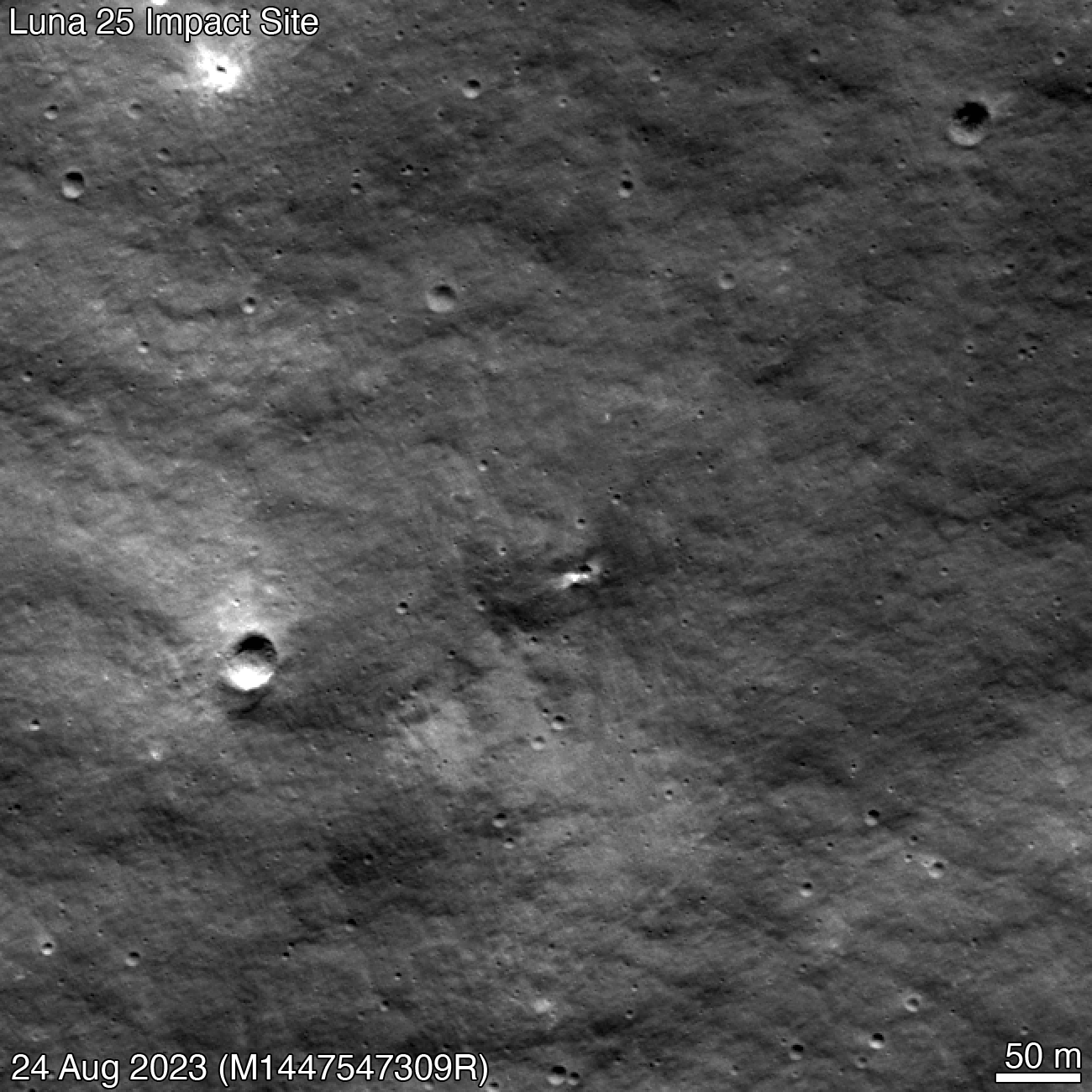A NASA moon probe has snapped an aerial photo of India’s Chandrayaan-3 lander, the first craft ever to successfully touch down near the lunar south pole.
NASA’s Lunar Reconnaissance Orbiter (LRO) captured the image on Aug. 27, four days after Chandrayaan-3’s history-making landing on the moon.
The photo shows the dark rectangular shadow of Chandrayaan-3’s Vikram lander surrounded by a “bright halo,” which “resulted from the rocket plume interacting with the fine-grained regolith (soil),” NASA officials wrote in an image description today (Sept. 5).
Related: See 1st photos of the moon’s south pole by India’s Chandrayaan-3 lunar lander
Vikram touched down with a small rover named Pragyan. The two robots investigated their exotic surroundings for nearly two weeks, before getting shut down to prepare for the long, cold lunar night. (Lunar locales get about 14 Earth days of continuous sunlight, followed by 14 Earth days of nonstop darkness.)
Pragyan went into sleep mode on Sept. 2, and Vikram followed suit two days later. Both crafts have accomplished their primary missions, but the Indian Space Research Organization (ISRO) is hopeful they have some exploring still left in them.
“Vikram will fall asleep next to Pragyan once the solar power is depleted and the battery is drained. Hoping for their awakening, around September 22, 2023,” ISRO said in a post on Xformerly known as Twitter, on Monday (Sept. 4).

The moon’s polar regions are thought to harbor large stores of water ice, a crucial resource that could help support human outposts and supply off-Earth propellant depots, allowing greater exploration of the solar system.
As a result, the poles are a popular target for current and future missions, both robotic and crewed. NASA’s Artemis 3 mission, for example, aims to put astronauts down near the moon’s south pole in late 2025 or 2026. The agency plans to build one or more bases in the area over the ensuing years as well.
In fact, Russia aimed to beat India to the south polar punch with its Luna-25 lander. However, Luna-25 suffered an anomaly on Aug. 19 while performing maneuvers to set up a landing try and crashed into the moon.
LRO also managed to image that crash sitewhich now features a fresh crater about 33 feet (10 meters) wide.






